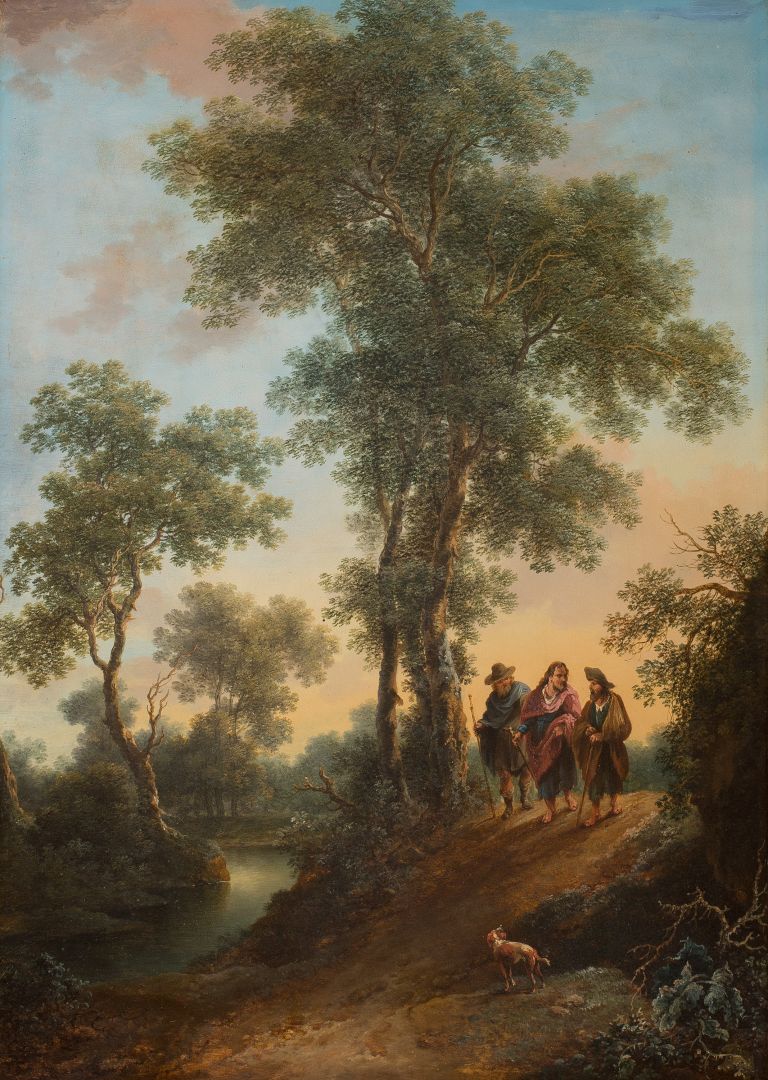Hall 1 - 2. view
Pilgrims to Emmaus
JOHANN CHRISTIAN BRAND (1722–1795)
Pilgrims to Emmaus, c. 1780
oil on brass, 60x44 cm; unmarked
Fine Arts Collection, Inv. No.: 82.119.
Landscape painting as a standalone genre began to develop in Hungary from the 1800s. Previously landscapes would only be featured as the background for figural compositions. As with other forms of fine art, landscape painting was influenced by the works of Viennese masters, whose reproduced graphics were widespread and served as an example.
Johann Christian Brand was one of the best Austrian landscape painters of the 18th century, who not only inspired the genre’s development through his etchings, but also by being active in Hungary. He also worked as an academy teacher in Vienna, which further added to his reputation. He worked in Hungary during the 1750s, at the estate of the Pálffy aristocrat family.
This painting of Brand was acquired by the museum through purchase from an individual in Miskolc in 1982. Previously, the painting decorated the mansion of Count Andrássy. It depicts the story from the Gospel of Luke, in which two of Jesus’ disciples are returning from Jerusalem to their home at Emmaus after his crucifixion. The disciples are joined by another traveller, who is the resurrected Saviour himself, however they are too stricken with grief to realize this. This biblical parable became a common theme to depict in the Baroque period, in order to popularize the practice of pilgrimage. The Christian interpretation of the Gospel text suggests that seeking out places of worship is a meritorious deed which pleases God.
Although the composition provides a serious and thoughtful narrative for the viewer, the human figures are not the focus. The master was less invested in the depiction of the scene itself, which can be considered as an everyday occurrence. Instead, he was more interested in the fine depiction of the rich and detailed idyllic landscape. This painting is an important stepping stone in the development of landscape painting, which gradually shifts away from figural depictions and makes the land itself the model of the composition.
Pirint Andrea
